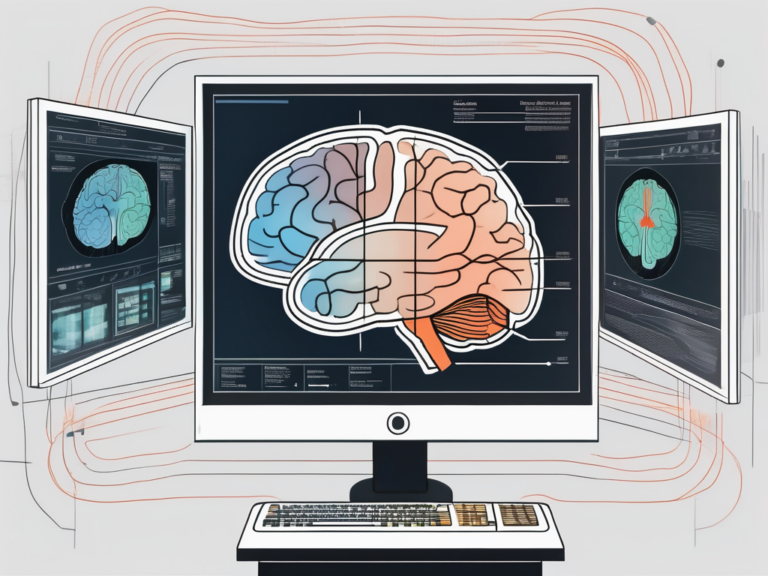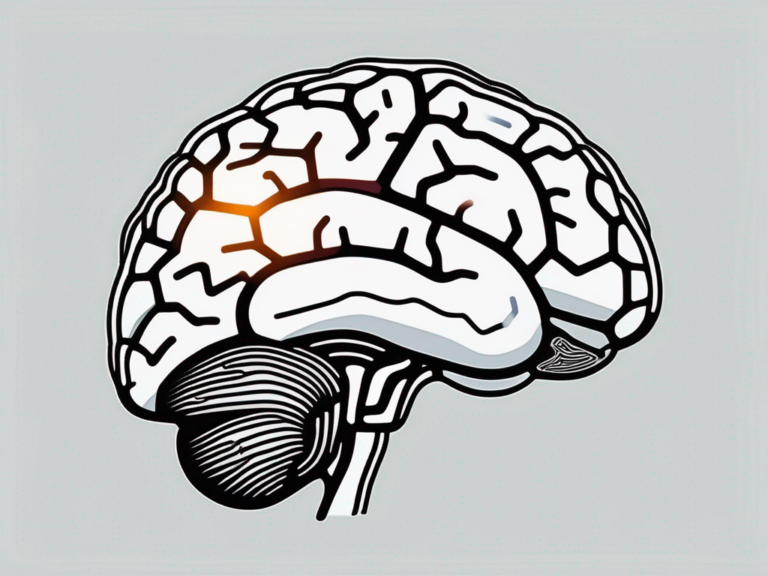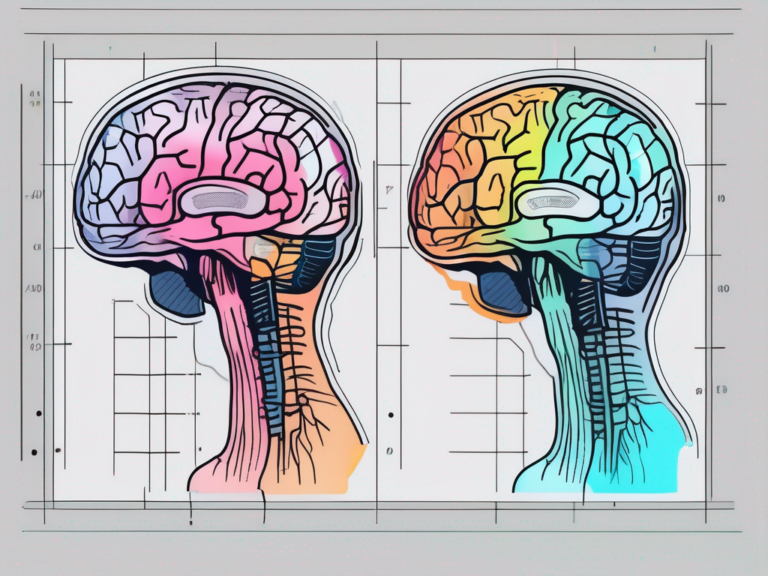why does fmri have poor temporal resolution
Functional Magnetic Resonance Imaging (fMRI) has revolutionized our understanding of the human brain. By measuring changes in blood flow, fMRI allows researchers to map brain activity with remarkable precision. However, one crucial limitation of fMRI is its poor temporal resolution, hindering our ability to capture rapid neural processes. In this article, we will delve into the reasons behind this limitation and explore its implications for cognitive neuroscience research.
Understanding the Basics of fMRI
Before diving into the intricacies of temporal resolution, let’s establish a foundational understanding of fMRI. Simply put, fMRI is a non-invasive imaging technique that measures brain activity by detecting changes in blood oxygenation levels. It relies on the principle that active neurons require more oxygen, leading to increased blood flow to those regions.
Functional magnetic resonance imaging (fMRI) has revolutionized the field of neuroscience by allowing researchers to observe the brain in action. This imaging technique provides detailed insights into the brain’s inner workings, offering a glimpse into the complex interplay of neural networks that underlie our thoughts, behaviors, and emotions.
What is fMRI?
fMRI stands for functional magnetic resonance imaging. It captures neurophysiological processes by detecting alterations in blood flow and oxygenation in the brain. By analyzing these changes, researchers can identify active brain regions and infer underlying cognitive processes.
One of the key advantages of fMRI is its non-invasiveness, making it a safe and widely used tool in both research and clinical settings. By measuring changes in blood flow, fMRI provides a window into brain activity without the need for surgery or injections, offering a valuable method for studying the brain’s response to various stimuli and tasks.
The Role of fMRI in Neuroscience
With its ability to visualize brain activity in vivo, fMRI has become a cornerstone of modern neuroscience. It has facilitated breakthroughs in understanding cognition, perception, emotion, and other fundamental brain functions. Despite its invaluable contributions, the temporal resolution of fMRI remains a challenge.
Researchers continue to explore ways to improve the temporal resolution of fMRI to capture the rapid dynamics of neural activity more accurately. Innovations in imaging technology and data analysis techniques hold promise for enhancing the precision and speed of fMRI, opening up new possibilities for studying the brain with unprecedented detail and clarity.
The Concept of Temporal Resolution
Temporal resolution refers to the ability of a measuring system to capture changes over time. In the context of fMRI, it determines how accurately and rapidly we can track neural events. A neuronal event could be the onset of a stimulus, the initiation of a motor response, or the retrieval of a memory.
Temporal resolution is a crucial aspect of neuroimaging techniques like functional magnetic resonance imaging (fMRI) as it directly impacts the precision with which brain activity can be observed and analyzed. The finer the temporal resolution of an imaging method, the more detailed insights it can provide into the dynamic processes unfolding in the brain. Researchers and clinicians rely on temporal resolution to study the timing of neural responses, map brain connectivity patterns, and investigate the sequence of cognitive operations.
Defining Temporal Resolution
In fMRI, temporal resolution refers to the minimum time interval at which changes in brain activity can be reliably detected. Traditional fMRI has a temporal resolution in the range of a few seconds per image, limiting its ability to capture rapid neural dynamics.
Advanced imaging techniques such as multiband imaging and event-related fMRI have been developed to enhance temporal resolution, allowing researchers to explore brain activity at a finer timescale. By reducing the gap between image acquisitions, these methods enable the observation of fast-paced neural events that were previously beyond the reach of conventional fMRI technology.
Importance of Temporal Resolution in Brain Imaging
Understanding the dynamics of brain activity is critical for unraveling complex cognitive processes. Different brain networks engage and disengage rapidly during various cognitive tasks. To capture these fleeting and synchronized processes, high temporal resolution is paramount.
Moreover, temporal resolution not only aids in capturing moment-to-moment changes in brain activity but also plays a significant role in studying brain disorders and their temporal characteristics. Conditions such as epilepsy, where abnormal neural activity occurs in rapid bursts, benefit greatly from imaging techniques with high temporal resolution, offering insights into the timing and propagation of pathological brain signals.
Factors Contributing to fMRI’s Temporal Resolution
The poor temporal resolution of fMRI stems from several factors inherent to the technique. Let’s explore two fundamental factors that influence the temporal resolution of fMRI.
The Nature of Blood Oxygen Level Dependent (BOLD) Signals
The BOLD signal, the basis of fMRI, exhibits a sluggish response compared to the rapid electrical activity of neurons. The sluggishness arises from the complex neurovascular coupling mechanisms that underlie the BOLD signal. It takes time for the increased blood flow to deliver oxygen and for the corresponding change in blood oxygenation to be detected.
Furthermore, the BOLD signal is influenced by factors such as the baseline cerebral blood flow, the rate of oxygen consumption by neurons, and the density of capillaries in the brain region being studied. These variables can introduce additional variability in the temporal response of the BOLD signal, further impacting the temporal resolution of fMRI studies.
The Impact of Hemodynamic Response
The hemodynamic response, the time it takes for blood flow changes to occur, adds to the temporal lag in fMRI. This lag is typically on the order of several seconds, further limiting the technique’s temporal resolution. These delays arise due to factors such as the time taken by capillary beds to fill and the time required for oxygen extraction from blood.
Moreover, individual differences in vascular physiology, such as variations in vascular compliance and the efficiency of neurovascular coupling, can contribute to differences in hemodynamic response across subjects. These variations can introduce additional challenges in achieving high temporal resolution in fMRI studies, particularly in studies involving multiple participants or longitudinal designs.
Comparing Temporal Resolution: fMRI vs Other Imaging Techniques
To grasp the full extent of fMRI’s temporal resolution limitations, it is worth comparing it to other neuroimaging techniques commonly used in cognitive neuroscience research. Understanding the temporal resolution of different imaging modalities is crucial for researchers to select the most appropriate tool for their studies, depending on the temporal dynamics of the brain processes they aim to investigate.
When delving into the realm of neuroimaging, one cannot overlook the remarkable temporal resolution offered by techniques such as Electroencephalography (EEG) and magnetoencephalography (MEG). These methods operate at the millisecond level, providing researchers with unparalleled precision in capturing rapid neural dynamics. EEG records electrical activity on the scalp, while MEG detects the magnetic fields produced by neuronal currents. Together, they offer a unique window into the brain’s real-time processing, making them invaluable tools for studying cognitive functions with high temporal specificity.
Temporal Resolution in EEG and MEG
Electroencephalography (EEG) and magnetoencephalography (MEG) offer millisecond-level temporal resolution, providing unmatched precision in capturing rapid neural dynamics. These techniques directly measure electrical or magnetic activity generated by neuronal populations, allowing researchers to track brain activity in real-time.
Moreover, the combination of EEG and MEG with structural imaging techniques like MRI enables researchers to integrate information about brain structure and function, offering a comprehensive understanding of neural processes at different temporal and spatial scales.
Temporal Resolution in PET Scans
Positron Emission Tomography (PET) scans, in contrast to fMRI, have even poorer temporal resolution. PET relies on the detection of radioactive tracers that slowly accumulate in specific regions of the brain. The acquisition time for a PET scan can range from minutes to hours, making it ill-suited for capturing fast-paced neural events.
Despite its limited temporal resolution, PET excels in providing valuable insights into neurotransmitter systems and metabolic activity in the brain. By tracing the distribution of radiotracers, PET can reveal information about processes underlying various neurological and psychiatric disorders, contributing to advancements in diagnosis and treatment strategies.
The Implications of fMRI’s Temporal Resolution
The limitations of fMRI’s temporal resolution have significant implications for cognitive neuroscience research, shaping the questions we can investigate and the insights we can glean. Let’s explore some of these implications below.
Challenges in Cognitive Neuroscience Research
Rapid cognitive processes, such as decision-making and language parsing, primarily occur within timescales that exceed the temporal resolution of fMRI. Consequently, studying these processes extensively using fMRI alone presents challenges. Researchers often need to supplement fMRI with techniques like EEG or MEG to capture the fine-grained temporal dynamics underlying these processes.
For example, imagine trying to capture the split-second decision-making process of a professional athlete during a high-pressure game. The temporal resolution of fMRI, which typically ranges from one to three seconds, simply cannot capture the lightning-fast neural events that occur within milliseconds. To truly understand the neural mechanisms underlying such processes, researchers must turn to complementary techniques like EEG or MEG, which offer millisecond-level temporal resolution.
Furthermore, the limitations of fMRI’s temporal resolution also impact our ability to investigate the intricacies of language processing. Language comprehension involves rapid and complex neural processes, such as syntactic parsing and semantic integration. These processes unfold within milliseconds, making it challenging for fMRI to capture the precise timing and sequence of neural activations. To overcome this limitation, cognitive neuroscientists often combine fMRI with other techniques that provide higher temporal resolution, allowing them to unravel the intricate dance of neural activity during language processing.
Potential Solutions and Future Directions
Cognitive neuroscientists are actively seeking solutions to overcome the limitations of fMRI’s temporal resolution. Promising developments include the integration of fMRI with faster neuroimaging techniques, such as simultaneous fMRI and EEG or MEG recordings. These hybrid approaches capitalize on the strengths of each technique, yielding a more comprehensive picture of brain function.
For instance, researchers have successfully combined fMRI with EEG to investigate the temporal dynamics of neural oscillations during various cognitive tasks. By simultaneously recording both fMRI and EEG data, scientists can examine the relationship between large-scale brain networks captured by fMRI and the precise timing of neural activity revealed by EEG. This integration allows for a more nuanced understanding of how different brain regions interact and coordinate their activity over time.
Another exciting avenue for improving fMRI’s temporal resolution lies in the development of ultra-fast fMRI techniques. These cutting-edge methods aim to capture brain activity with sub-second temporal resolution, opening up new possibilities for studying rapid cognitive processes. By pushing the boundaries of fMRI technology, researchers hope to unlock a wealth of information about the brain’s intricate workings.
In conclusion, while fMRI has undoubtedly transformed our understanding of the brain, its poor temporal resolution inhibits our ability to capture rapid neural events. Recognizing the limitations of fMRI’s temporal resolution is crucial for designing experiments and interpreting findings accurately. By harnessing the synergies between fMRI and other techniques, we continue to push the frontiers of our understanding of the most intricate structure in the universe — the human brain.






